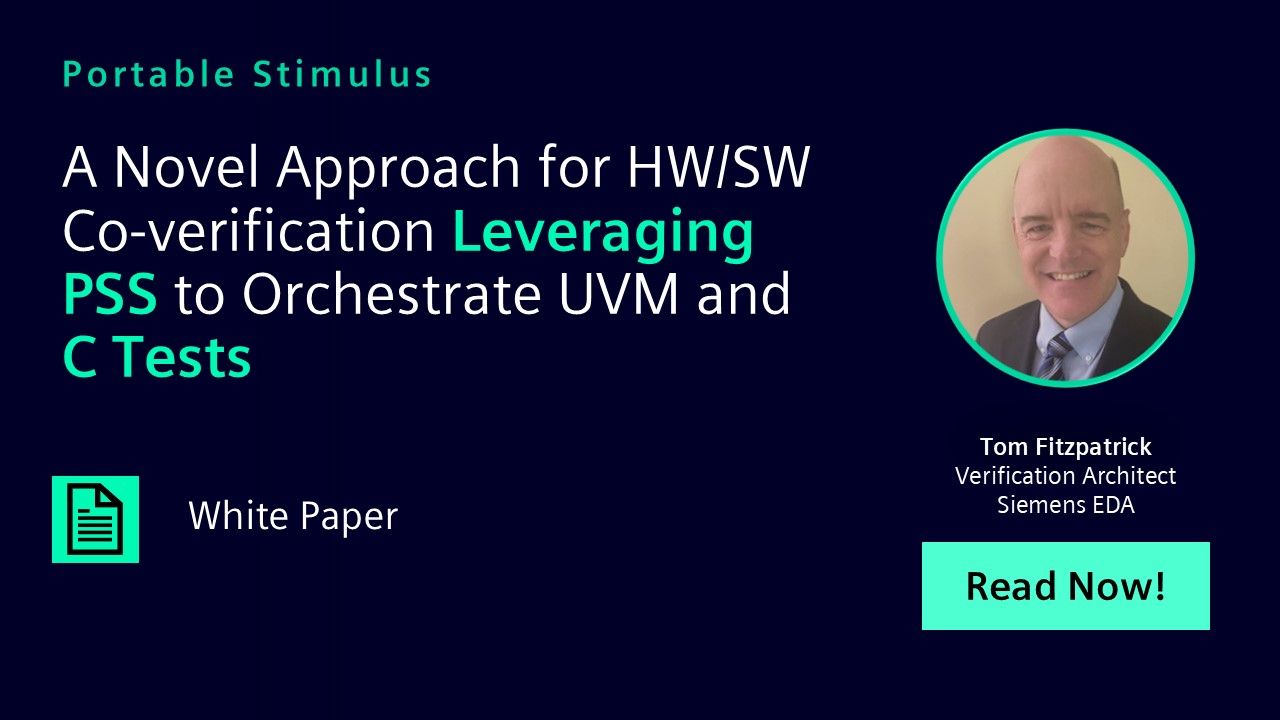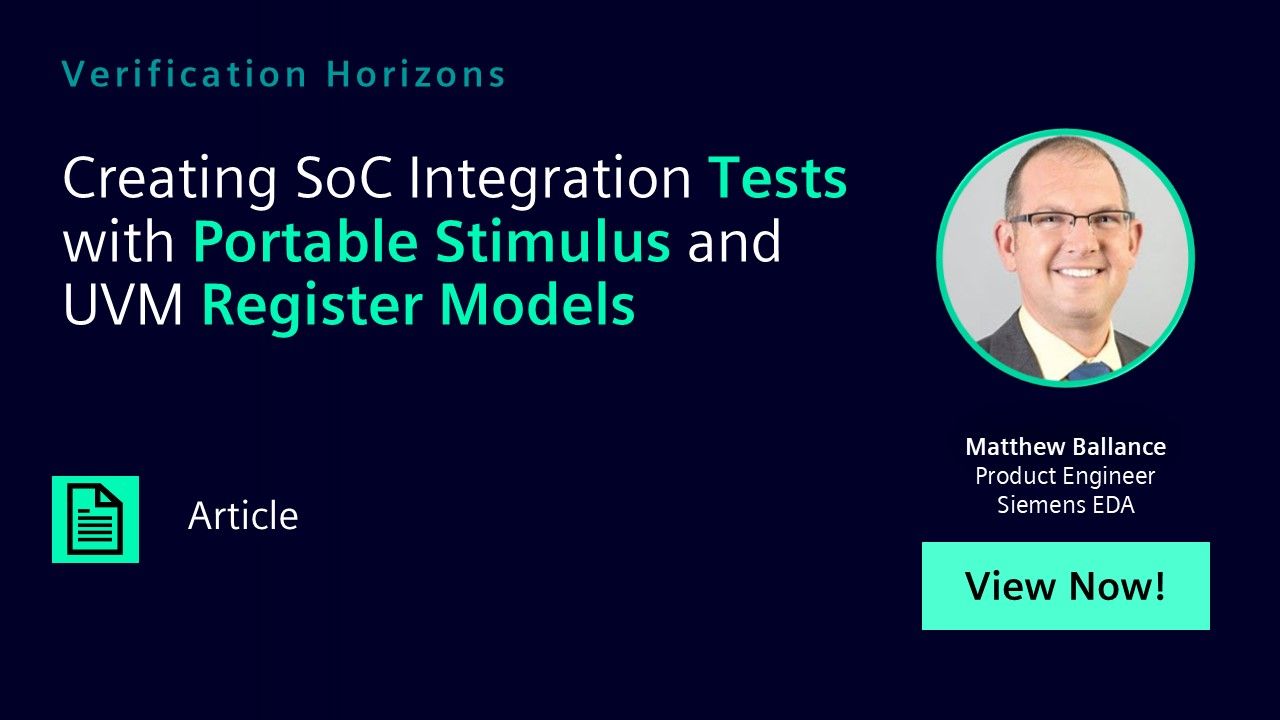Browse all content in Verification Academy: Articles, Cookbooks, Resources, Sessions, and Tracks
Search Results - 36 results
Filters
May 2025
January 2025
December 2024
-
A Novel Approach for HW/SW Co-verification Leveraging PSS to Orchestrate UVM and C Tests
Portable Stimulus Dec 15, 2024 pdf -

A Novel Approach for HW/SW Co-verification Leveraging PSS to Orchestrate UVM and C Tests
Portable Stimulus Dec 15, 2024 Paper
October 2024
-
Celebrating the Approval of Portable Test and Stimulus Standard (PSS) 3.0
Portable Stimulus Oct 09, 2024 link
August 2024
June 2024
-

Portable Stimulus and Verification IP Fit Together Like a Hand in a Glove
Portable Stimulus Jun 24, 2024 Conference
December 2019
August 2019
July 2019
-

-
Questa Verification IP and Portable Stimulus Maximize Your UVM Productivity
Portable Stimulus Jul 11, 2019 pdf
June 2019
February 2019
November 2018
July 2018
June 2018
-

Creating SoC Integration Tests with Portable Stimulus and UVM Register Models
Portable Stimulus Jun 29, 2018 Article
December 2017
-

Separating Test Intent from Design Details with Portable Stimulus
Portable Stimulus Dec 05, 2017 Article






